How much of this tradition is still alive? You might be surprised to learn that a lot. Polish people still enjoy going for a winter sleigh ride, albeit the form of it has changed much since the 17th century. Regardless of the form, it is quite unique how the tradition of this form of past time survived and does very well among Polish people.
Needle in a haystack
In the 17th and 18th centuries, going out in large sleighs pulled by horses was not just some activity to devote a day to. No. It was an entire logistic challenge with kuligi (aka sleigh rides) lasting for as long as a dozen or so days! Kulig is the Polish word that stands for this type of winter activity. It probably derives from the word kulik, which is also the same as a bird – curlew. Language experts point to two possible origins of the word, both of which are connected to this breed of bird, which the people who were participating in a kulig (earlier form: kulik) would be looking for.
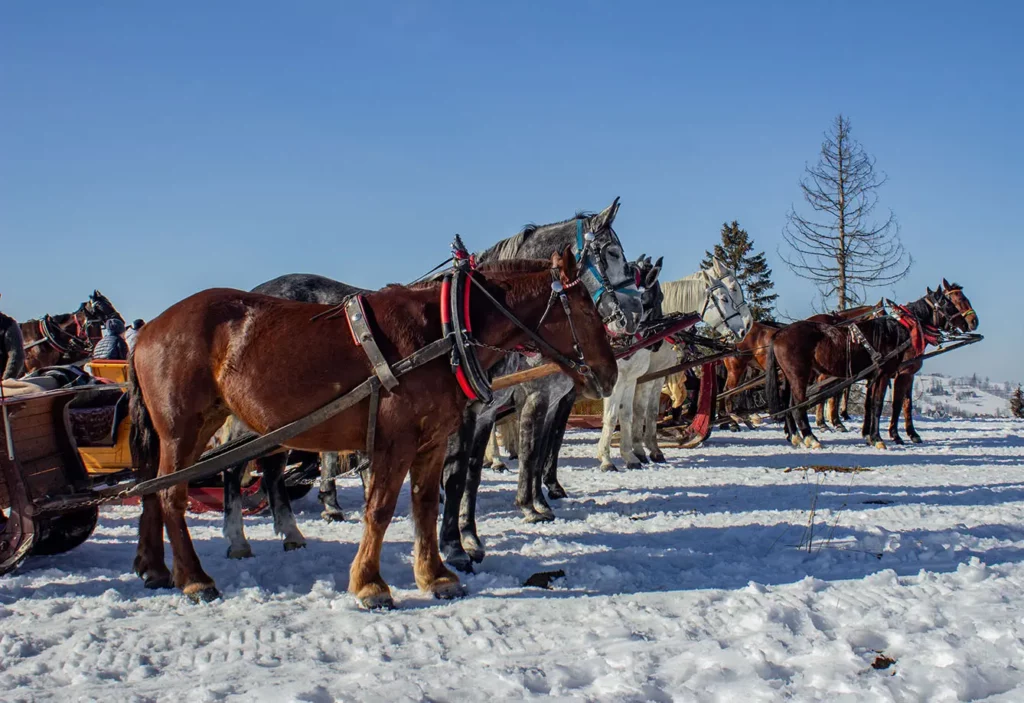
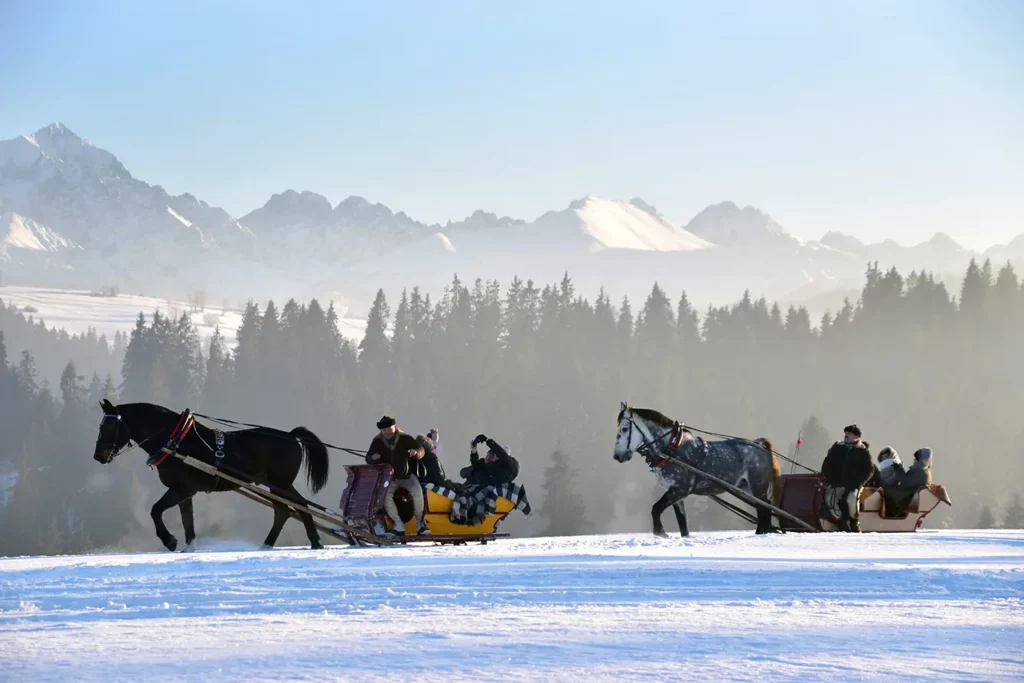
The most interesting part of this tradition is its connection to the poor curlew, as curlews are not only very rare – they are migrating birds. This means that chances of finding one in February – March are and were just the same as the temperature at the time: below zero. Clearly, the nobles were quite happy to openly admit they simply wanted to have a long ride in the sleigh, crash at their neighbor’s mansions, drink, and be merry without the fear of completing the alleged aim of the ride, so finding the needle in a haystack.
Baby, it’s cold outside – Let’s have a sleigh ride!
Why was the ride so important? Firstly, the company was! Turns out the noblemen saw winter as the perfect time to fall in love. Extremely low temperatures were a great excuse to cuddle up under tons of fur with a girl you wished to marry (or have married). After all, isn’t that what every gentleman would do? Sharing body heat is a form of survival technique and cannot be taken lightly. Jokes aside – the situation was perfect for breaking the ice (see what I’ve done here?) between shy, young people who were about to enter into the world standing on their own two feet (after all, four is much better than just two). Also, kuligi were a perfect occasion for nobles to visit each other and settle any differences they might have had between them. It was a way to strengthen the bonds of the community
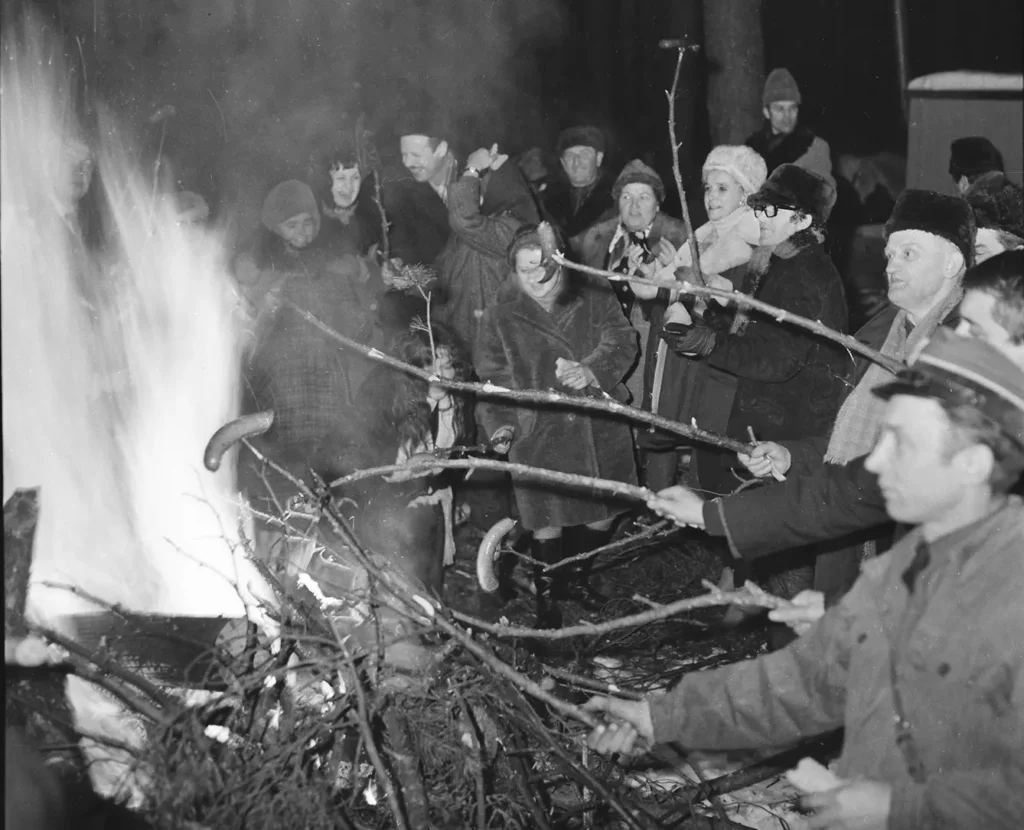
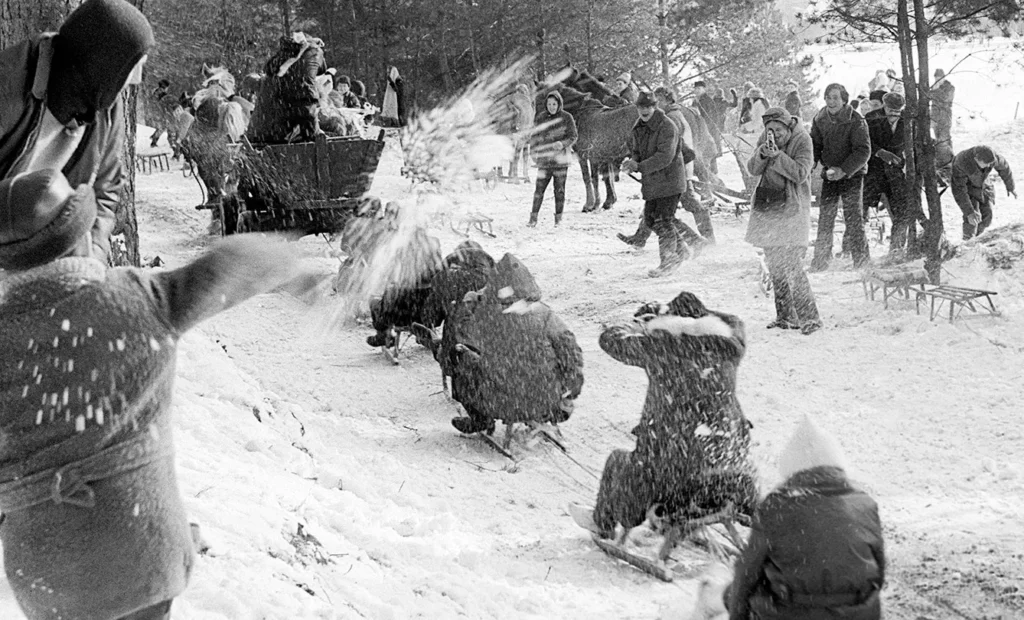
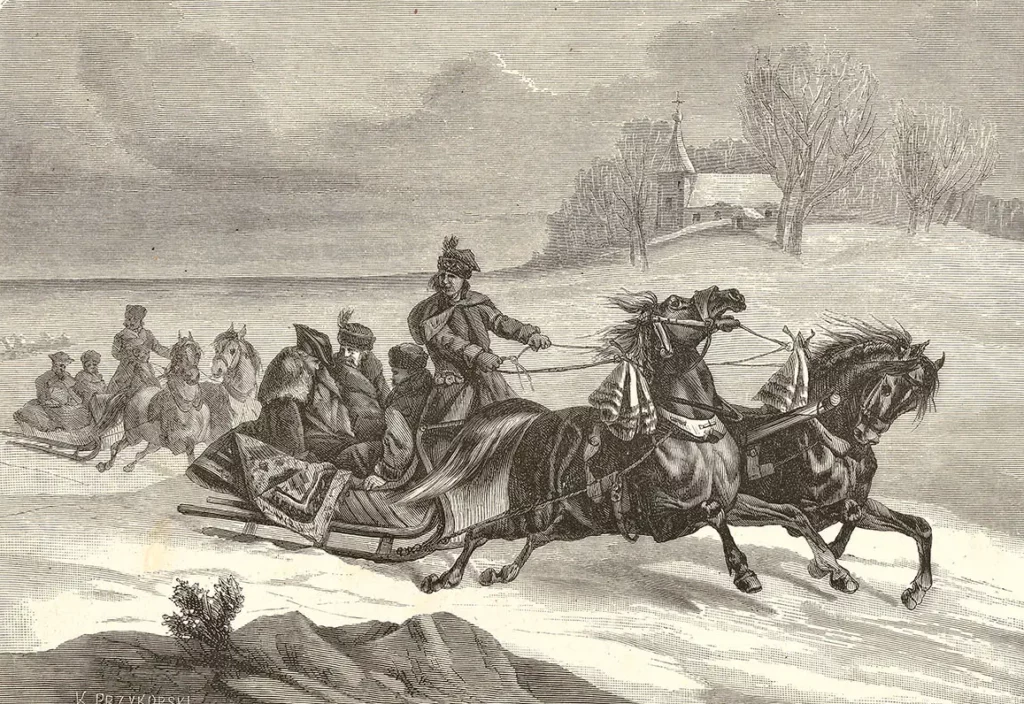
And the community was all it was about. During the partitions, the nobles treated the tradition of kulig as a way to spite the occupiers. They were used to celebrate Polish customs, culture, folk dances, and music. It was considered extremely bad taste to incorporate any foreign elements into this carnival celebration. The party was led by a leader known as Arlequin. He was responsible for planning the route, arranging the stops, and making sure it all went smoothly. In those days, it was quite a challenge!
Mechanical sleigh or the real deal?
The tradition survives. Today, kuligi do not take many days of careless fun. People do not travel through the snow in large sleighs nor wrap themselves in fur. However, whenever there is enough snow in the carnival season, people tend to jump happily at the opportunity to have some snowy fun. These days a line of sleds will be pulled by horses (sometimes tractors, but this is not how a kulig should be done!) on a fun route.
Depending on the passengers, the routes may be simpler if it is schoolchildren, who are enjoying the kulig, or more advanced, if the party consists of adults, for example, co-workers (you’d be surprised by the popularity kuligi enjoy at corporations and offices – they treat them as a perfect bonding activity). Afterward, the participants often gather around a bonfire, where they laugh, dance, drink, and barbecue sausages (if you want to do it right, the sausage has to be on a stick you find in the nearby forest. Otherwise, it doesn’t count). Usually, the fun takes a few hours, after which people return to their homes.
Why are kuligi still so popular among both young and old? Perhaps some things simply don’t change. Cold weather, stunning snowy landscapes, merry company, and the possibility of getting that little bit closer to the girl or boy you really like are the most precious joys in lives that will simply never get too old. When in Poland, take that crazy sleigh/sled ride and join in the carnival fun!







